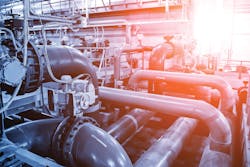Previous articles described the sewage collection systems for two adjacent sewage districts and how the costs associated with operating the sewage treatment plant were allocated and billed. Four flowmeters were used to determine the amount of sewage generated by the first sewage district. Measurements from these flowmeters were used for billing purposes.
The amount billed each day was calculated by multiplying the daily flow by the billing rate per thousand gallons and then adding a surcharge if the flow during the day exceeded a set amount. The surcharge arrangement in the contract could be thought of as a penalty structure for not maintaining a tight sewage system and thereby allowing excess water to enter the system and require treatment.
Surcharges that were applied on days with high sewage flow accumulated over time and prompted the first district to hire a flowmeter expert (me) to examine the existing flowmeters and investigate their appropriateness and performance. Investigation indicated that all four flowmeters were appropriate for the application, but three of the four flowmeters were installed incorrectly, which caused their measurements to be higher than the actual flow by amounts that could not be quantified.
In addition, the zero on the fourth (and largest) flowmeter was found to be elevated. My recollection is that the zero offset was quantified and caused the measurement to be high by approximately 20% of the typical daily flow. Stated differently, the first sewage district received invoices that were higher than they should have been.
Next month, we will discuss the fourth flowmeter.
David W. Spitzer is a principal at Spitzer and Boyes, LLC, which offers engineering, focused market research, writing/editing white papers, strategic marketing consulting, distribution consulting, seminars and expert witness services for manufacturing and automation companies. Spitzer has written more than 400 technical articles and 10 books about flow measurement, instrumentation and process control. He can be reached at 845-623-1830 or via spitzerandboyes.com.


